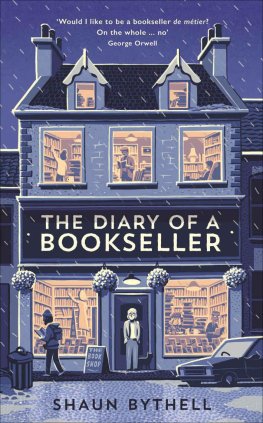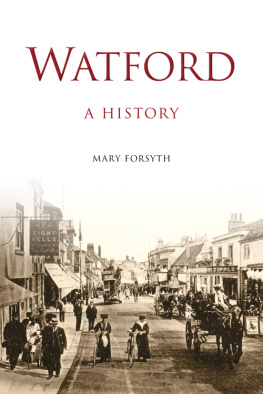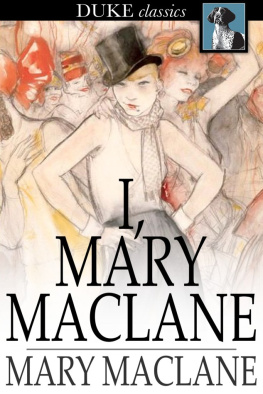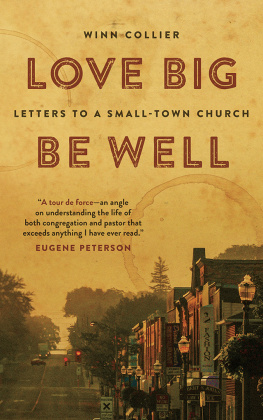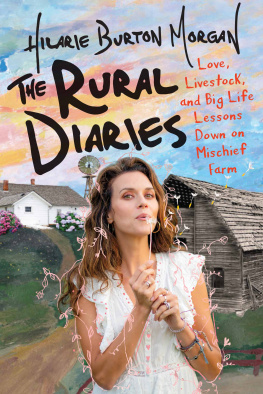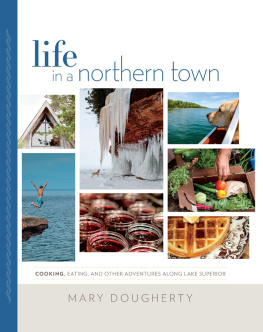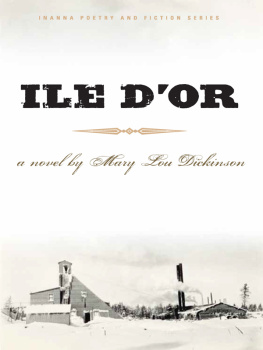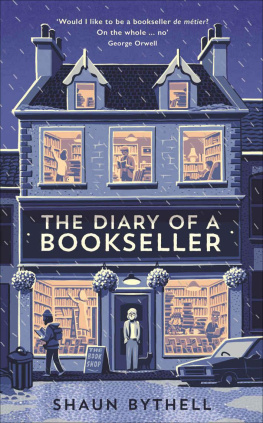A Crisis of Community
This book was published with the assistance of the Anniversary Endowment Fund and the Authors Fund of the University of North Carolina Press.
2014 The University of North Carolina Press
All rights reserved
Manufactured in the United States of America
Set in Charter and Birch
The paper in this book meets the guidelines for permanence and durability of the Committee on Production Guidelines for Book Longevity of the Council on Library Resources.
The University of North Carolina Press has been a member of the Green Press Initiative since 2003.
Library of Congress Cataloging-in-Publication Data
Fuhrer, Mary Babson.
A crisis of community : the trials and transformation of
a New England town, 18151848 / Mary Babson Fuhrer.
pages cm
Includes bibliographical references and index.
ISBN 978-1-4696-1286-7 (hardback)
1. Boylston (Mass.)History19th century. 2. Boylston (Mass.) Social conditions19th century. 3. Community lifeMassachusetts Boylston. 4. Social changeMassachusettsBoylston. 5. White, Mary Avery, 17781860. 6. White family. I. Title.
F74.B56F85 2014
974.43dc23 2013032613
18 17 16 15 14 5 4 3 2 1
IN MEMORY OF WILLIAM BABSON,
who told me about the peepers,
and
IN HONOR OF HELEN BABSON,
who told me, Dont write so that you can be understood, but so that you cannot be misunderstood
Contents
INTRODUCTION
This Wilderness World
ONE
Sowing
TWO
A Church Disassembled
THREE
Economic Choice and Consequences
FOUR
Fields and Dreams
FIVE
Useful Knowledge
SIX
Re-Forming Community
SEVEN
Political Principles, Partisan Passions
EIGHT
The Bonds of Antislavery
CONCLUSION
Reaping
APPENDIX A
Prosopography
APPENDIX B
Geographic Mobility
APPENDIX C
Agricultural Data
APPENDIX D
Politics
Illustrations
Boylston, Massachusetts, ca. 1830
Aaron White Sr. and Mary Avery White, tinted daguerreotype, ca. 1841
The Striped Pig, sheet music cover, lithograph, 1838
Aaron White Jr., date unknown
Aaron White Jr.s satirical so-called dollar, brass, ca. 1857
Cradle quilt, probably Boston, 1836
Acknowledgments
My acquaintance with Mary White began fifteen years ago, when Jack Larkin introduced me to her diaries and her familys letters. Jack and other Old Sturbridge Village people, especially Ed Hood, Tom Kelleher, Frank White, and Jeannette Robichaud, were unfailingly generous in sharing Marys world with me. Soon after I met Mary, I visited the folks at the Boylston Historical Society, and they became not only my greatest resource but my dear friends. It is only because of the extraordinary job Bill DuPuis, Fred Brown, Judy Haynes, and the rest of the BHS folks have done in collecting and preserving Boylstons past that this story could be told.
As all historians know, the best people in the world are the archivists who help us mine their collections. I am particularly grateful to the fine staffs at the Massachusetts Historical Society, the American Antiquarian Society, the Massachusetts Archives, the New England Historic and Genealogical Society, the Massachusetts State House Library, Historic New England, Boston Public Library Special Collections, University of Delaware Special Collections, Brown Universitys Hay Library, and the Worcester County Registry of Deeds and Probate Records. I am also grateful to the keepers of alumni records at Harvard University, Williams College, Wheaton College, and Andover Academy.
Local historical society archives are priceless resources in this sort of small-town research, and I am grateful to the dedicated and enthusiastic folks at the West Boylston Historical Society, New Ipswich Historical Society, Ashland Historical Society, and Northborough Historical Society. I am also grateful for the patient assistance of town clerks in Boylston, West Boylston, and Ashland; the public libraries of these towns; and the church administrators at the First Congregational Churches in Boylston and West Boylston. In addition, several individuals generously lent private resources that were very helpful: Diana Smith shared her research on Boylston anti-slavery petitions from the National Archives, Vernon Woodworth and Molly Scott Evans shared the manuscript of their ancestor Avery White, and Linda Branniff shared priceless local history resources from Aaron White Jr.s adopted hometown.
Several scholars have generously provided access to their research as well as their time and advice. Brian Donahue of Brandeis, who read a draft of the manuscript, has been a long-time generous resource on historical land use and ecology in Massachusetts. Phil Lampi of the American Antiquarian Society assisted me with America Votes, his extraordinary database of early national election returns. Ben Friedman of Harvard University shared his curriculum and readings on religion and economy in American history. John Brooke of Ohio State provided guidance on reconstructing and interpreting Worcester County voter affiliations. Bob Gross of the University of Connecticut has been exceptionally generous, sharing draft material on his upcoming book, The World of the Transcendentalists; references to his earlier work; and feedback on my work.
Several associations provided research and publication assistance. Old Sturbridge Village got me started on this quest with its research fellowship. The Massachusetts Foundation for the Humanities and the Bay State Historical League provided research and publication fellowships. Peter Benes and the Dublin Seminar supported the publication of two articles that formed part of the background for two chapters.
Mark Simpson-Vos, Paula Wald, and Liz Gray of the University of North Carolina Press have been ever patient with my endless questions and generous with their guidance.
Primary thanks go to my mentors, Jeff Bolster and Bill Harris. They guided, counseled, cheered, consoled, advised, and endlessly read wordy drafts, usually managing to tell me what it was I was trying to say, but ever so gently! They are both scholars and gentlemen, and I am proud to be able to call them my friends. I also benefited from the support and friendship of academics Jess Lepler and Lige Gould, who read drafts of this project.
I am ever so grateful for the support and encouragement of dear friends Joanne Myers and Ellen Rothman. They made me believe I could do this. Thanks also to my Small Group, especially my cheerleaders, Earl and Ellen.
Finally, this book is a family affair. My children, Margaret, John, and Jeffrey, transcribed diaries, entered scads of data, provided tech support, and endured endless dinner-table discussions of the other Mary. My husband, Jeff, supported my musings, read and reflected on every chapter, shared his wisdom and insights, and gave unconditional support. He asked the critical So what? questions when I rambled on, he focused my fuzzy ideas, he cheered my good ones, and when I doubted, he made me laugh! I am forever grateful.
A Crisis of Community

Boylston, Massachusetts, ca. 1830. Graphic design by Karen Dolimount.
Introduction
This Wilderness World
When a heavy-laden ox team lumbered into Boylston in the spring of 1842, there were many who believed it was hauling 1,000 pounds of trouble. The wagon drew up in the barnyard of Capt. John Howepossibly the most cantankerous man in this rural villageto deliver its load: a newly cast steeple bell. Howe had engineered this moment, and he was exultant. As townsmen gingerly raised the bell upon timbers to transport it to the new town hall, the clapper swung clear. The deep tone of the bell rang out resoundingly, heralding its arrival. For some in this central Massachusetts village, it was a peal of victory; for others, it tolled alarm and dismay.
Next page

